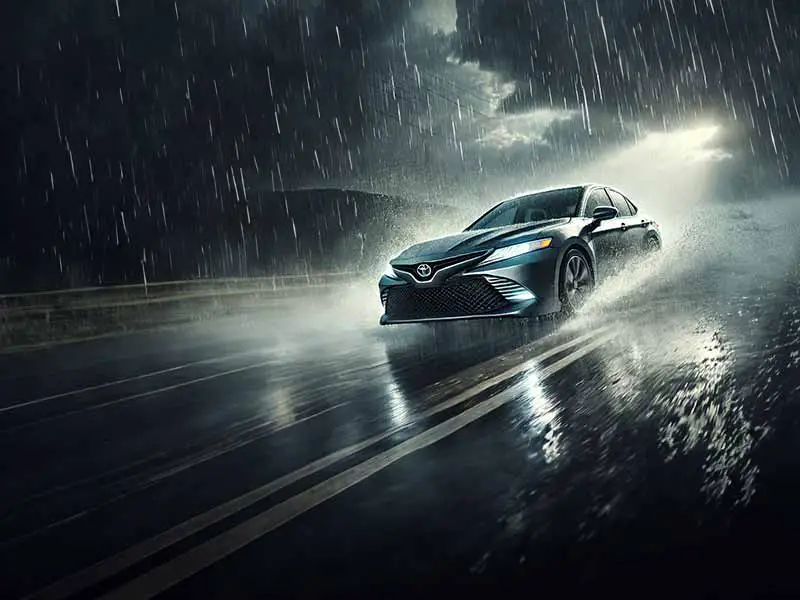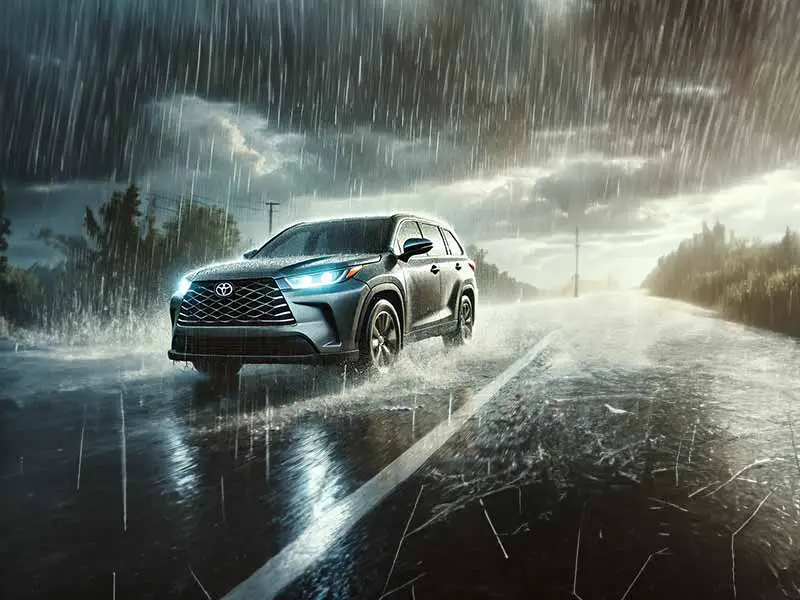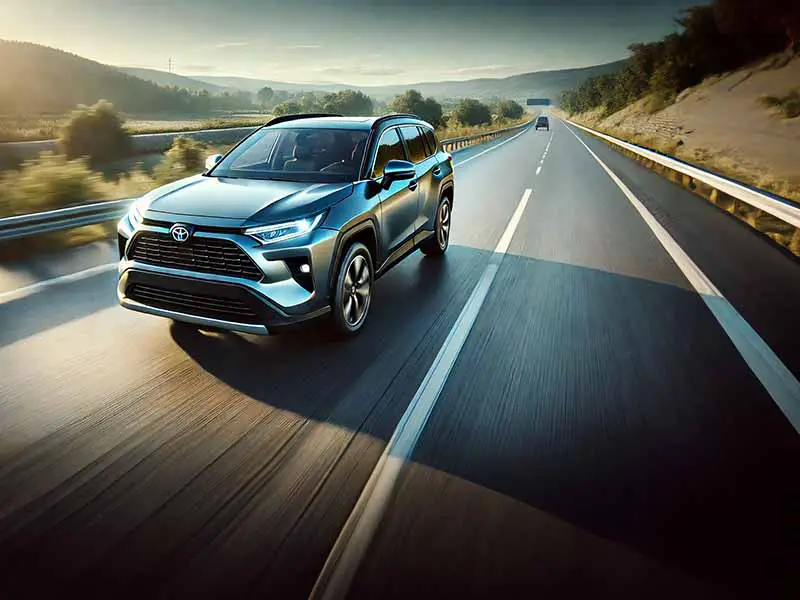Most vehicle manufacturers use only one light in the instrument cluster to warn the driver of tire pressure monitoring system (TPMS) related issues. Other manufacturers, such as Honda, have two lights – TPMS and Low Tire Pressure.
TPMS Light Vs Tire Pressure Light
The Tire Pressure Light warns that one or more of your tires have air pressure 25% lower than recommended.
The TPMS Light warns there is a problem with the tire pressure monitoring system.
Cars and trucks with just one light will have a blinking light when there is a system problem and a solid light when there is a tire pressure problem.
Generally speaking, the two-light system is better, but only slightly. The problem is that most people, whether they have a single light or two different lights, don’t know what the blinking or differences mean.
Let’s take a closer look.
Tire Pressure Light
The TPMS warning light, which looks like a tire cut-a-way with an exclamation point in the middle, is a warning indicator of the air pressure in your tires being 25% or more below the manufacturer’s recommendation shown on the tire information sticker in your driver’s door jamb.

What To Do When The Low Tire Pressure Light Comes On
You shouldn’t ignore the low tire pressure warning light. Here are the steps you should follow the moment you notice that the warning light has come on:
- If the low tire pressure light comes on, you should pull over immediately and manually check the pressure in your tires. This step will require you to use a handheld tire pressure gauge.
- Compare the current pressures to those listed on the tire information sticker in the driver’s door jamb or owner’s manual.
- NOTE: I recommend keeping a portable air compressor in your car or truck to ensure that you can fix the issue on the side of the road if one or more tires need air.
- You should also visually inspect each tire to see if there has been a puncture. This is especially true of any tire that is significantly lower in pressure than the others.
- If any tires do not hold the proper amount of air pressure, you must replace them with a spare tire, attempt to patch them with a plug kit or tire sealant, or call a tow truck.
- If no tire has significantly lower air pressure than 25% below the recommended amount, you should be able to safely drive a short distance to a gas station with an air pump if you don’t have one with you.
- Avoid driving at higher speeds and for any extended distance on under-inflated tires to avoid damaging and needing to replace them.
- Once your tires have been filled back up to the proper pressures, you may need to press the TPMS Reset button. The location of this button varies between the makes and models of vehicles.
If you have Direct TPMS, a tire pressure monitoring system with air pressure sensors in each tire, you should be able to look up the pressures in each tire through either the instrument cluster or infotainment system. You can then compare the pressures in the system with the recommended pressures listed on the tire information sticker in the driver’s door jamb.

TPMS Light
The TPMS light, which is usually simply the letters T-P-M-S illuminated, is a warning indicator of a problem with the tire pressure monitoring system. Usually, a dead or dying battery is in one of the air pressure sensors inside a tire.

What To Do When The TPMS Light Comes On
The TPMS light is just as critical as the low air pressure light. Since the TPMS light warns of a problem with the monitoring system, you will need to manually check your tires since you can’t rely on the system to report accurate tire pressures.
Once you are comfortable that all tires hold the proper air pressure, you can continue driving. However, you should have the problem with your TPMS fixed as soon as possible. You should treat a TPMS light the same as a tire pressure light.
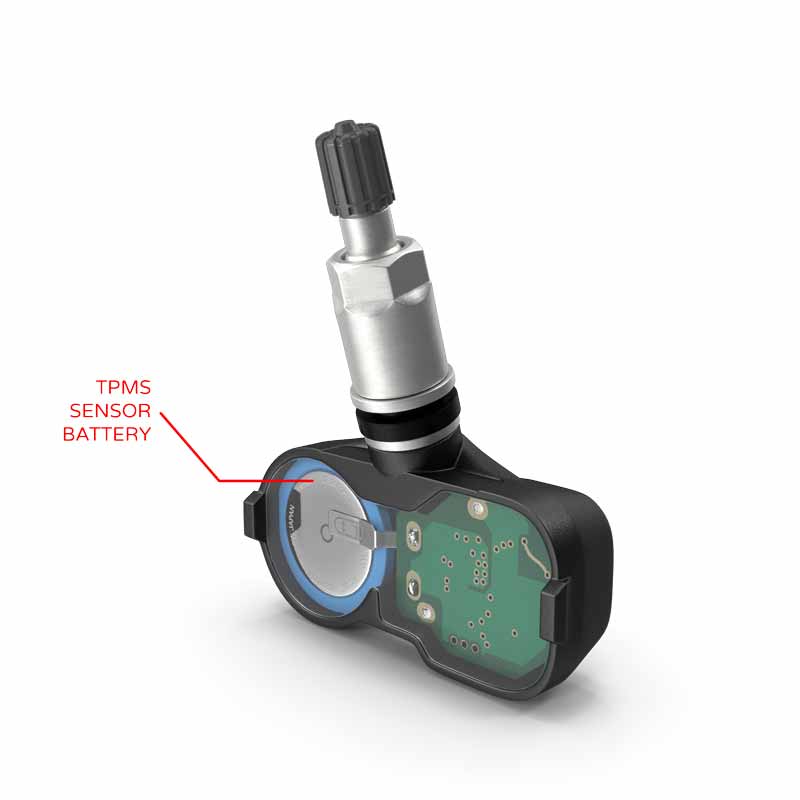
The most common cause of a TPMS light is a dead or dying battery in one of the TPMS sensors. The battery in most TPMS sensors will last 7 to 10 years and require the sensor to be replaced. This is due to the batteries not being designed to be replaced.
While it is possible to replace the battery in most sensors with some patience, it usually isn’t worth the effort compared to the cost of most aftermarket tire pressure sensors.
Other reasons the TPMS light may be lit are:
- A damaged pressure sensor
- A replacement sensor that wasn’t correctly programmed
- A problem with the TPMS computer, such as a wiring problem
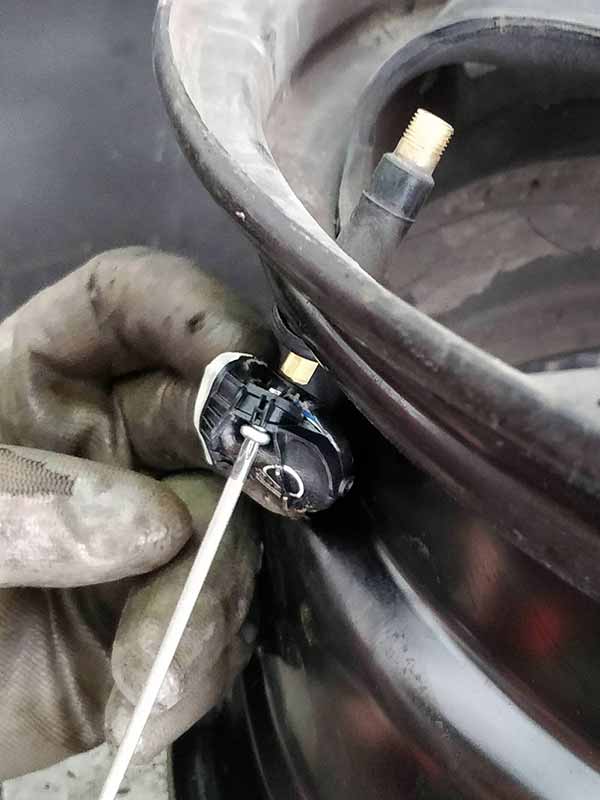
Why is my TPMS light on, but the tires are fine?
A common question is why the TPMS warning light is on when the tires are inflated to the correct tire pressures. By now, you know that there are two lights on some cars and trucks. And the TPMS light warns of a problem with the system, not the tires.
You should still check your tires until you get the problem causing the TPMS light to be lit resolved since you can’t rely on the system to alert you to a dangerously low tire pressure situation.

NOTE: I recommend keeping a portable air compressor in your car or truck to ensure that you can fix the issue on the side of the road if one or more tires need air.
Resources
Below are some links you may find helpful when learning about tires
- TPMS Honda tire pressure monitoring system light – Muller Honda
- What should you do when a tire-pressure light flashes – Car and Driver
Final Thoughts
Not all vehicles will have both of these lights, but those that do should be sure to check the air pressure in their tires either way. If your tires are correctly inflated, you can safely continue to drive.
If the TPMS light is on, you should schedule an appointment with your local tire shop to resolve the problem. This will ensure the TPMS system will inform you if one or more of your tires suddenly loses pressure.
If the tire pressure light is on, your TPMS has detected one or more tires have lost more than 25% of the recommended tire pressure. Continuing to drive with the air pressure in one of your tires at just under 25% is possible but not recommended since it will shorten the life of the tires, reduce performance, and reduce fuel efficiency. The tire’s sidewall begins to heat up as the pressure gets lower as you drive and can fail catastrophically.
Good luck and happy motoring.
